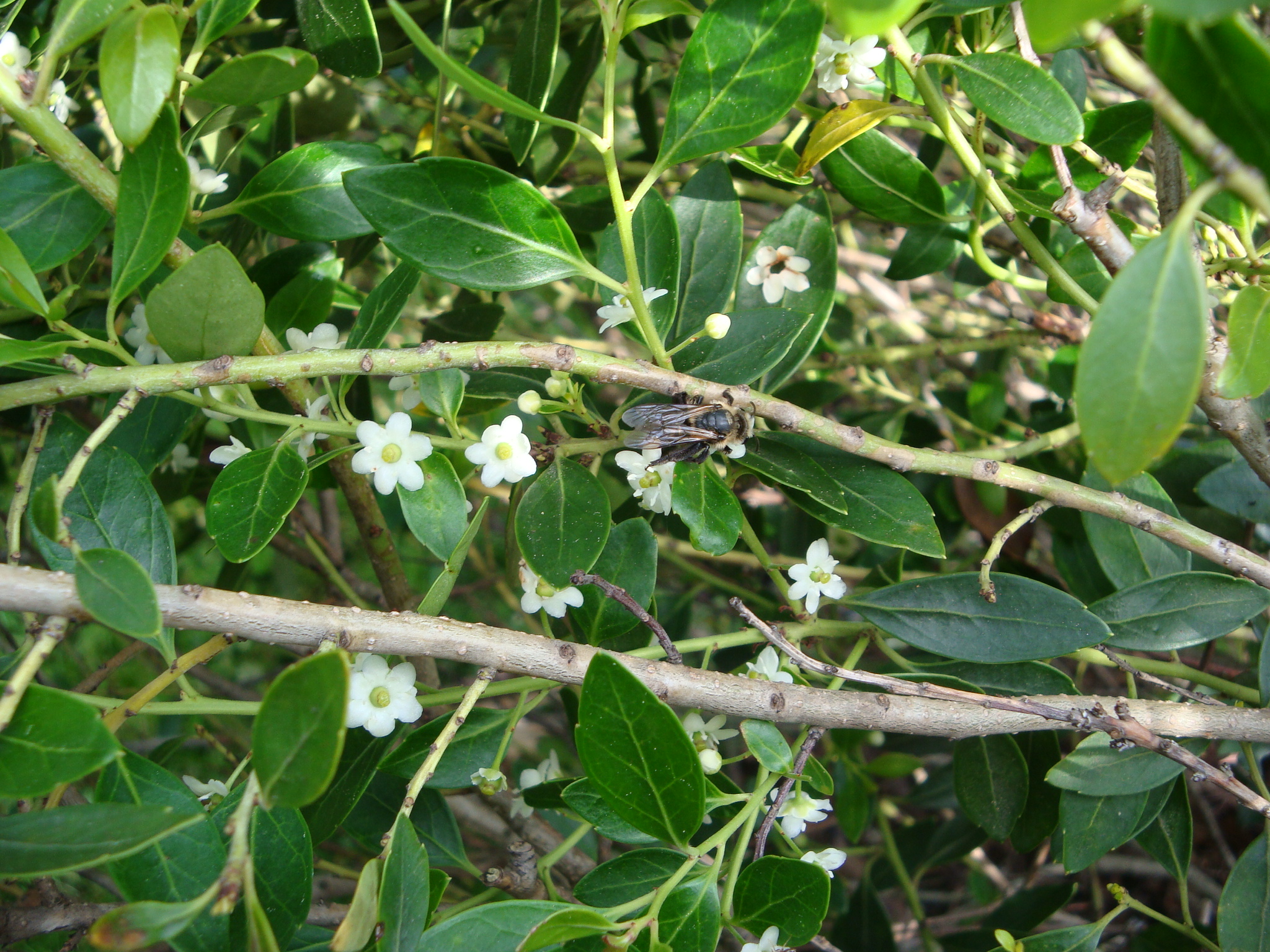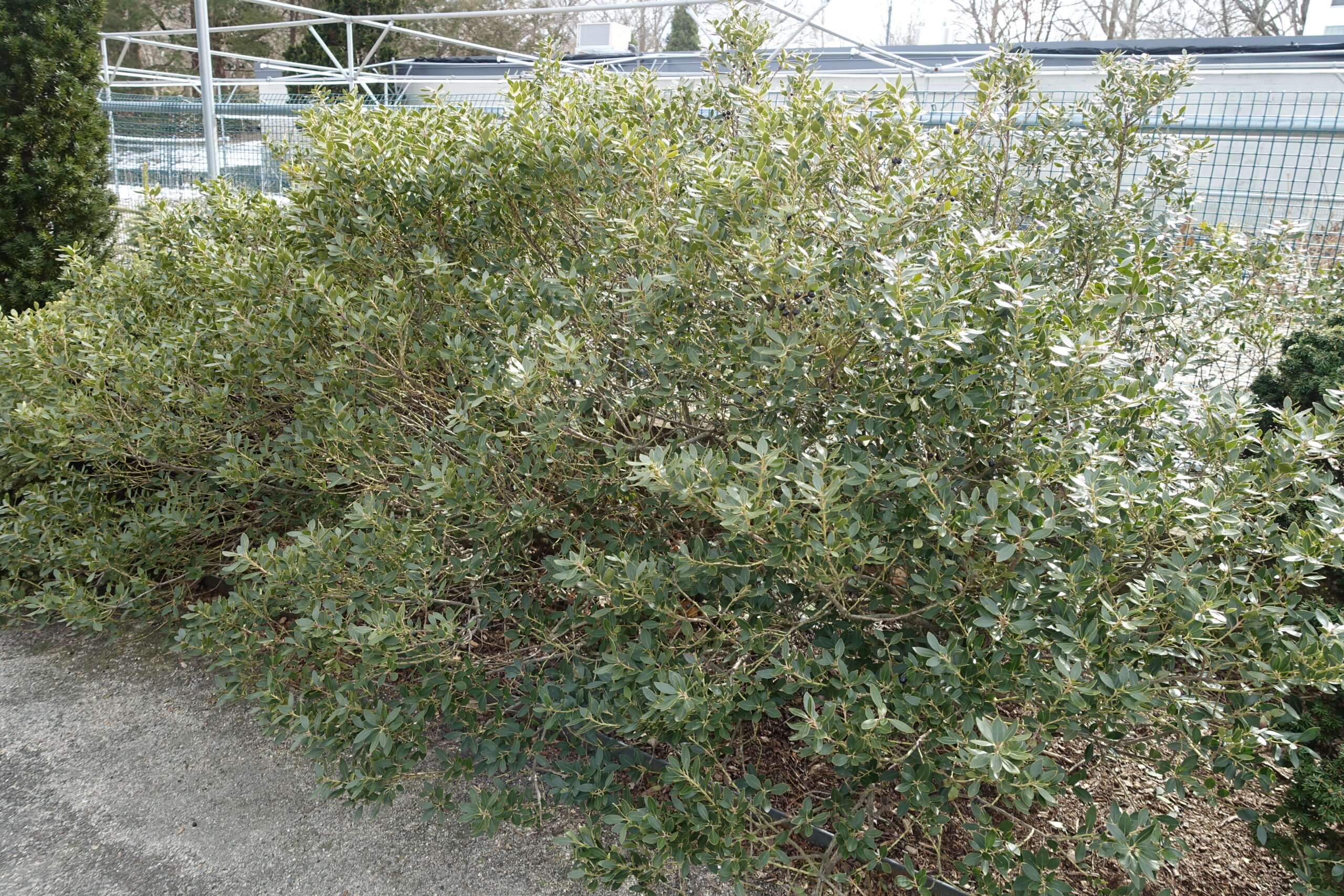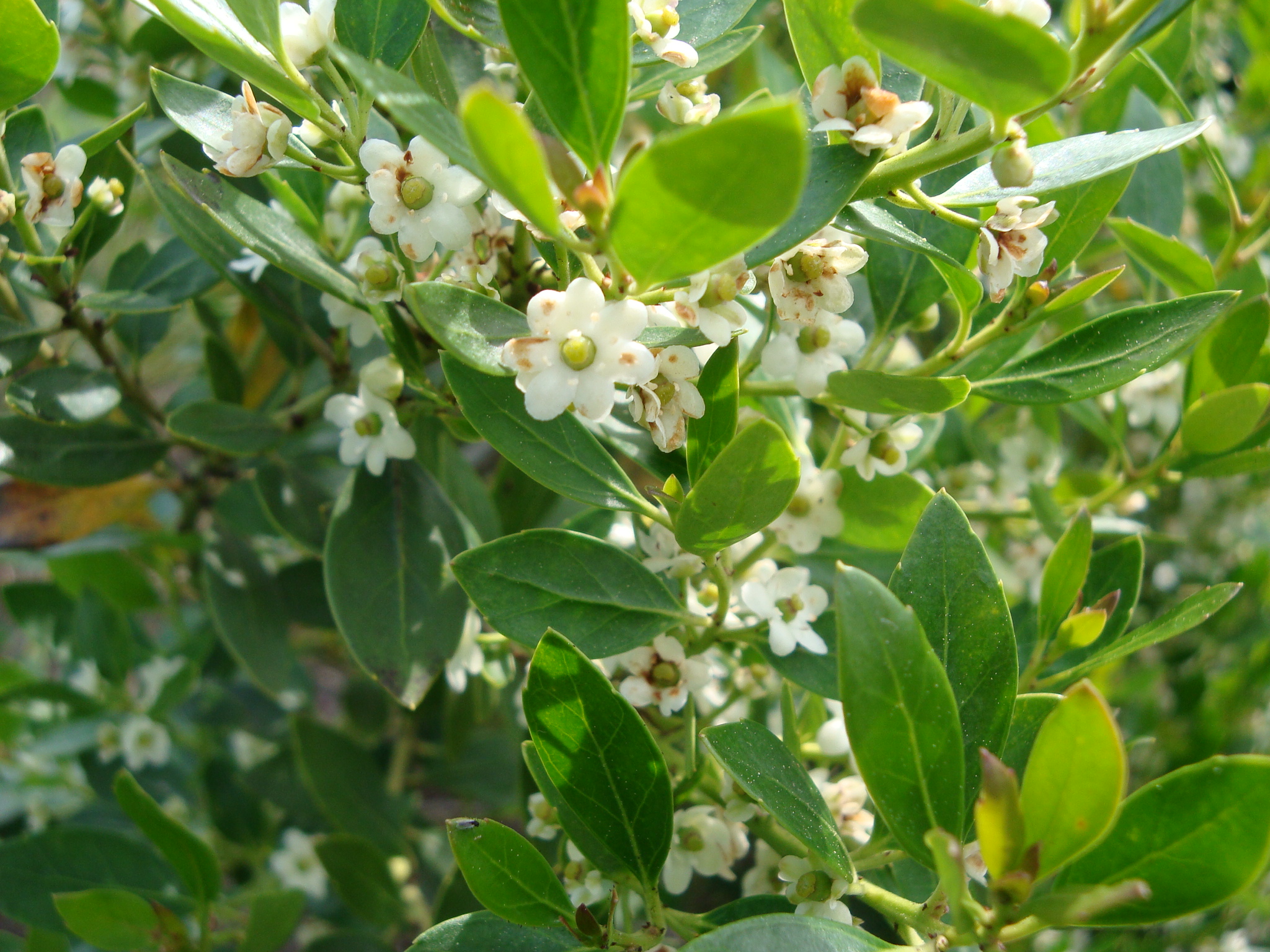Forever Emerald™ Inkberry
Ilex glabra ‘Peggy’s Cove’

- Accession Number
- The alpha-numeric value assigned to a plant when it is added to the living collection as a way of identifying it.
- Accession Date
- The year the plant’s accession number was assigned.
- Common Name
- The non-scientific name for the plant.
- Scientific Name
- The scientific name describes the species of an organism. The first word is the plant's scientific genus and the second is the specific epithet. This two-word binomial is sometimes followed by other taxonomic descriptors, including subspecies (denoted by "ssp."), variety (denoted by "var."), form (denoted by "f." or "forma"), and cultivar (denoted by single quotation marks).
- Plant Family
- The family to which the plant belongs.
- Propagation Material
- The first part (material code) describes the material used to create the plant. The most common codes are "SD" (seed), "EX" (existing plant), "PT" (plant), "CT" (cutting), "SC" (scion), "SG" (seedling), and "GR" (graft). The second part describes the lineage the plant is derived from. The last part describes the year of propagation.
- Collection Data
- The first part indicates provenance (place or source of origin) using a letter code ("W" = wild, "G" = garden, "Z" = indirect wild, "U" = uncertain). The second part lists the plant source. For wild-collected material, the collector, collection number, and country are given.
- Location
- The location of the plant on the landscape.
From a cultivated plant of known (indirect) wild origin
Alexander, J.
Forever Emerald™ inkberry is a favorite among Arnold Arboretum staff due to its small stature and site adaptability.
Inkberry (Ilex glabra) is a tried-and-true landscaping shrub and North American native, growing from Nova Scotia south to Florida and west to Missouri. There are dozens of commercially available inkberry cultivars—popular for their winter color (‘Bronze’ and ‘Burgundy Wine’), large foliage (‘Dilatush’), habit (‘Green Billow’ is just 12 to 18 inches [0.3 to 0.5 meters] tall), and use as an evergreen foundation planting or hedge.
Ilex glabra ‘Peggy’s Cove’ was originally found growing in a Nova Scotia seaside barren, north of the fishing village of Peggy’s Cove. In October 1988, Arboretum Plant Propagator Jack Alexander was attending the Atlantic Rhododendron and Horticultural Society meeting and was out botanizing with several local members. Alexander has an affinity for hollies, and he noticed small inkberries along the Atlantic Ocean, perhaps miniaturized by generations of growing on the harsh shoreline. He hoped that this was the case and collected 38 cuttings from 12 inkberry plants along the rocky coast. Upon Alexander’s return to the Arboretum, cuttings were cataloged, provided with the accession number 929-88, and stuck inside a humidity tent using a plant hormone to initiate rooting. The following spring, Alexander noted that 19 cuttings successfully rooted. From this group, he selected the plant that had smallest leaves and was most compact. I. glabra ‘Peggy’s Cove’ was introduced by Alexander and former Putnam fellow Eric Hsu in the Holly Society Journal 18 years after the original collection. Alexander gifted professor and horticulturist Michael Dirr a plant in 2012, who in turn provided it to Griffith Propagation Nurseries in Georgia, where it is being sold as Forever Emerald™.
Forever Emerald™ inkberry has retained its small stature over the last three decade—it stands only 4 feet (1.2 meters) tall by 5 feet (1.5 meters) wide, significantly smaller than the species, which can grow up to 10 feet (3.0 meters) tall and the popular comparison ‘Compacta’ inkberry (at 7 feet [2.1 meters] tall in the Arboretum’s collection). Forever Emerald™ inkberry has a low-branched, rounded habit and has not displayed the leggy, bare basal branches that afflict ‘Compacta’ inkberry. Leaves are small and a lustrous dark green above with light green undersides. Forever Emerald™ inkberry has exhibited very little winter burning over the years.
Forever Emerald™ inkberry is a truly prolific bloomer—it bears copious, solitary white flowers in late spring, which are attractive to bees. Forever Emerald™ inkberry is female, and fruit is a shiny dark purple to black drupe that persists and provides additional winter interest. It is extremely adaptable in the landscape, performs best in full sun, and is well utilized in mass. Forever Emerald™ inkberry is an Alexander and Arboretum staff favorite, and as such, this beloved plant has made its way into many home gardens. It is being re-released through the Arnold Selects plant introduction program.
Canada
Viewing this plant in-person? Look for these defining characteristics:
About Our Collection
Fun Facts
Stats
- Living Specimens
- Specimens Dead or Removed
- First Addition
- Most Recent Addition
- Tallest Specimen


Living Specimens
| Plant ID | Accession Date | Received As | Origin | Source |
|---|---|---|---|---|


